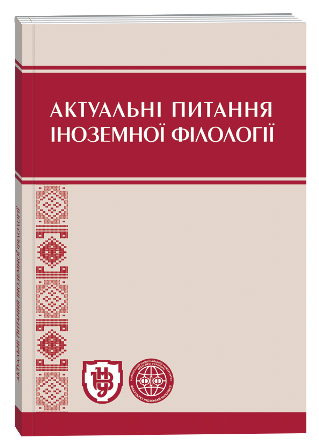THE ROLE AND SIGNIFICANCE OF PHRASEOLOGY IN THE LANGUAGE OF MODERN YOUTH (BASED ON THE MATERIAL OF THE GERMAN YOUTH PRESS)
DOI:
https://doi.org/10.32782/2410-0927-2024-20-7Keywords:
phraseological units, press, specificity, youth periodicals, German languageAbstract
The article highlights the role and essence of phraseological units in the language of modern youth (based on the material of the German youth press). It is emphasized that the phraseological composition of the German language is a set of stable combinations of words that reflect the customs, life, culture, mentality, and worldview of the people. It is proved that phraseological units, as well as lexical units, unlike grammatical or phonetic norms, are the most dynamic component of the German language, open to evolutionary changes and transformations, and therefore they directly and most accurately reflect a variety of changes in almost all spheres of German society. It is emphasized that the phraseology of German periodicals for young people can clearly trace the peculiarities of expressive, emotional reflection of the most diverse realities of this social group, the specifics of its way of thinking and worldview, the diversity of reactions to the most pressing issues and phenomena of reality. It is emphasized that due to the imagery and expressiveness, expressiveness and wit, possibilities of ironic and playful modification, phraseological units in the language of the German youth press become productive means of arousing the interest of the youth readership, conveying information in a form familiar to the youth environment, and giving the materials a touch of youthful emancipation. In view of this, the phraseological units of the language of the modern German youth press are an interesting research phenomenon. The article analyzes the youth press as a separate segment of the German media market, which is represented by periodicals that are an important source of various information for young people. It is noted that, being oriented primarily towards the youth readership, this segment of German periodicals is distinguished by a number of specific features, including: multifunctionality, which involves the implementation of informative, educational, entertaining, educational, socialization, etc. tasks.
References
Алефіренко М.Ф. Теоретичні питання фразеології. Харків: Вища школа, 1987. 135 с.
Баран Я. А. Теоретичні основи фразеології. Ужгород, 1999. 176 с.
Гамзюк М. В. Емотивний компонент значення у процесі створення фразеологічних одиниць (на матеріалі німецької мови). Монографія. К.: Видавничий центр КДЛУ, 2000. 256 с.
Задорожна І. П. Деякі особливості компонентів фразеологічних одиниць у німецькій мові. Науковий вісник Чернівецького університету: зб. наук. пр. Чернівці. Рута, 2000. Вип. 84: Германська філологія. С. 136–142.
Німецько-український фразеологічний словник в 2 т. Київ: Рад. шк., 1981. Т. 1. А–К. 416 с.; Т. 2. L–Z. 384 с.
Олійник Л. В. Синонімія в німецькомовному молодіжному слензі: дис. ... канд. філол. наук: 10.02.04. Запоріз. нац. ун-т. Запоріжжя, 2016. 228 с.
Burger H. Phraseologie: Eine Einführung am Beispiel des Deutschen. Berlin: Erich Schmidt, 2015. 241 S.
Burger H. Mediensprache: eine Einführung in Sprache und Kommunikationsformen der Massenmedien. Berlin [u.a.]: de Gruyter, 2014. 532 S.
Duden, Redewendungen und sprichwörtliche Redensarten: Wörterbuch der deutschen Idiomatik. Mannheim [u.a.]: Dudenverlag, 1997. 864 S.
Henne H. Jugend und ihre Sprache: Darstellung. Materialien. Kritik. Berlin, De Gruyter, 2010. 399 S.
Lüger H.-H. Pressesprache. Tübingen: Niemeyer, 1995. 169 S.
Palm Ch. Phraseologie: Eine Einführung. Tübingen: Gunter Narr, 1997. 130 S.
Wörterbuch der Jugendsprache. Stuttgart: PONS GmbH, 2011. 138 S.







